You’d be hard-pressed to find someone who doesn’t like rabbits. What’s not to love about their fuzzy, round bodies, comically long ears, and ever-twitching noses? Well, maybe they aren’t very popular with farmers or gardeners, but those are wild rabbits we’re talking about. Domestic rabbits could not survive in the wild; they have been bred to be virtually reliant on humans. Another interesting characteristic of rabbits is that they have been used for a variety of purposes, including food, fur, experimentation, and companionship. As a result, they have been selectively bred to the point where there are multiple breeds, not unlike what you see in dogs and cats. Also, like dogs and cats, rabbits can crossbreed to make “mongrels,” which may be more common. It can be hard to find purebred rabbits. As a general rule, rabbits of a certain breed are likely to conform to characteristics of the breed, but please keep in mind that they all have different personalities.
10. Dutch
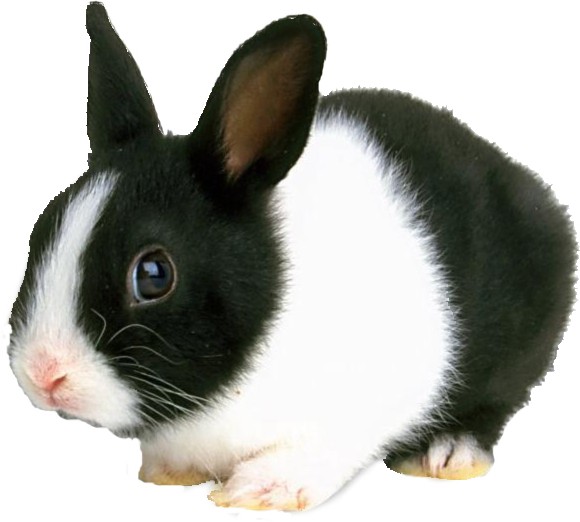
Smaller rabbit breeds are generally more skittish and less cuddly than larger breeds, but the gentle little Dutch is an exception. They are not only popular, but very recognizable by their distinct color patterning of white with colored patches on the head and rump, most commonly black but sometimes with brown, gray, gold, chinchilla (a shiny gray color) or tortoise (black and orange.) They are probably one of the best breeds for a house with children, but probably not really young children, as they may rough-house with the rabbit and not know how to handle it.
9. Netherland Dwarf
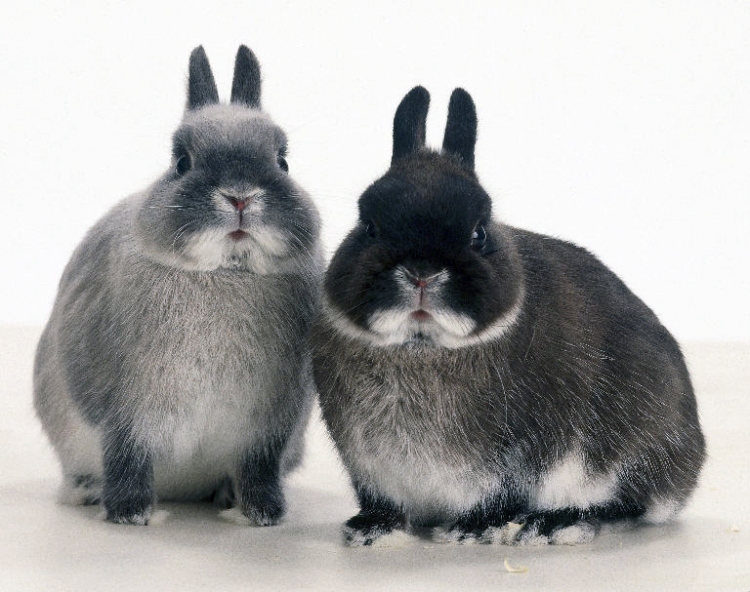
Some could say that the Netherland Dwarf is the Chihuahua of the rabbit world. This is the smallest rabbit breed, and a popular one due to their cuteness. Netherland Dwarves need more space than their size might suggest, because it is an active breed that enjoys exercise and doesn’t appreciate being confined to little cages all day. This relatively new breed did not appear until the 20th Century, and was created by crossbreeding Polish rabbits (another diminutive breed) with wild rabbits that were even smaller than the Polish, because apparently someone wanted to make a tiny animal even tinier. Because of their wild rabbit genetics, the first Netherland Dwarves were too distrusting of humans to make ideal house pets. However, selective breeding has curbed this, but the breed retains the aforementioned energetic nature.
8. Angora
There is a point where a rabbit starts looking less like a rabbit and more like a living, overgrown cotton ball. The Angora passes this point, and there are multiple types of Angora rabbits, but they are all so fuzzy that I put them into one entry. They were originally bred for fur, and they produce generous amounts of it. Grooming an Angora is obviously quite a task; even more so when you consider that rabbits frequently groom themselves, but don’t regurgitate hair like cats. Hair can cause blockages in the GI tract and possibly result in death. Regular grooming and a high-fiber diet can help mitigate this risk, but a high-fiber diet is important to any rabbit. English Angora rabbits are the fuzziest of the fuzzy, with so much fur that sometimes you cannot see their eyes. French Angoras have a thick undercoat and lack the wool on their paws and faces. Giant Angoras are the largest of the four ARBA Angora breeds. Finally, the Satin Angora is the result of a cross between a Satin rabbit (see next) and a French Angora, to create satiny fur in large amounts.
7. Jersey Wooly
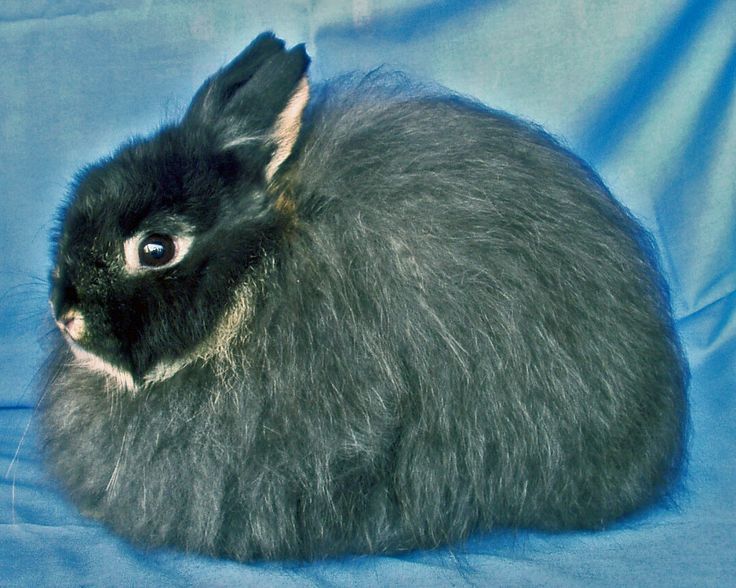
OLYMPUS DIGITAL CAMERA
Being from New Jersey, I of course had to include this breed. The Jersey Wooly is the result of crossbreeding a French Angora with a Netherland Dwarf, giving the rabbit the general body shape and famous hairstyle of the French Angora, but closer to the size of the Netherland Dwarf. This is an affectionate breed, although some prefer to be cuddled, and others like to move about.
6. Belgian Hare
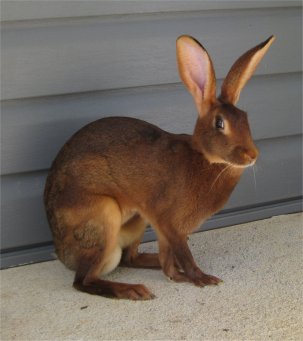
The name “Belgian Hare” is a bit of a misnomer. The Belgian Hare is in fact a breed of domestic rabbit, not a hare. The terms “rabbit” and “hare” are often used interchangeably, even though each word referrs to a different animal. Hares are usually larger; their feet and ears tend to be longer. Hares bear young that have fur and are able to see. Newborn baby rabbits, by contrast, are blind, bald, and helpless. Belgian Hares were bred to look more like hares. Like the Netherland Dwarf, they came about due to crossbreeding between wild and domestic rabbits. This breed may have some care requirements that differ from that of other rabbit breeds; consequently, they are a breed for the dedicated. Belgian Hares have a high metabolic rate and are considered one of the most active rabbit breeds.
5. Himalayan
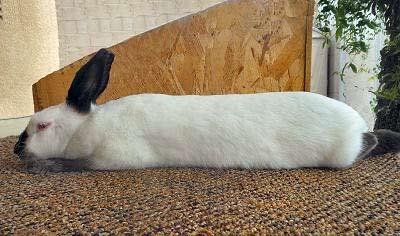
I had to include this breed because I have a friend who has one. Himalayans are the ancestor of the somewhat similar-looking Californian, except that it is a lot more slender, since the Himalayan was never intended to be a meat rabbit, while the Californian was. They are mostly white, with colored “points” on their extremities. Himalayans are known for their exceptionally calm nature and are a great breed for beginning rabbit owners.
4. Flemish Giant
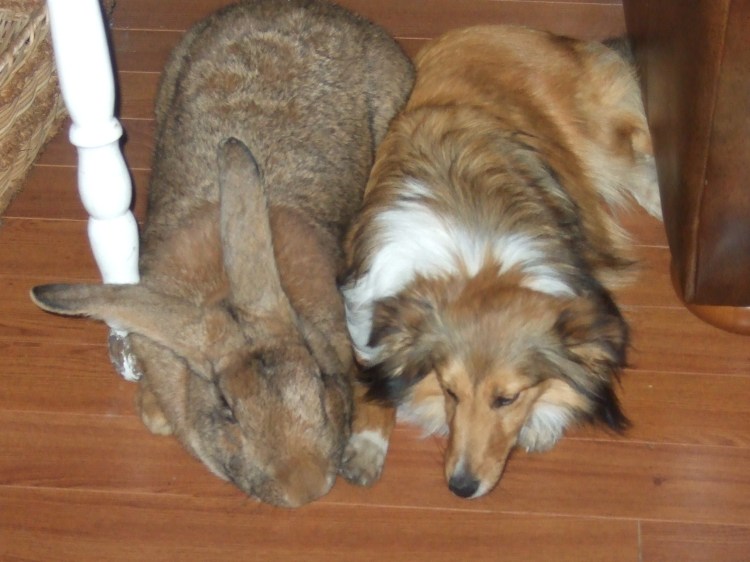
Your eyes aren’t playing tricks on you, there is nothing wrong with your computer screen, the picture above is not photoshopped, and you don’t need to put down the wineglass. Flemish Giants are often incorrectly labeled as the largest breed. Although ARBA doesn’t recognize any breeds larger than the Flemish Giant, the Continental Giant is technically the largest breed. Nonetheless, a Flemish Giant can be as big as a Shetland Sheepdog, as demonstrated by this picture. They were first bred for meat and fur (big bunnies mean that they provide more of both.) The Flemish Giant is a laid-back breed that enjoys attention and is not particularly active. One major drawback to this breed is its fairly short lifespan of about seven years, in comparison to the ten-year lifespan of the average rabbit.
3. Rex
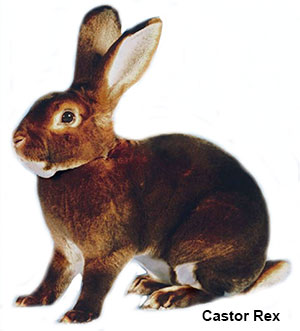
Rex rabbits are known for their plush coats, and if their average maximum weight of ten pounds sounds like too much for you, there is a smaller breed, the Mini Rex, that has the same type of coat. Both breeds are affectionate, although the Standard may be more affectionate than the Mini, which tends to be more active.
2. English Lop
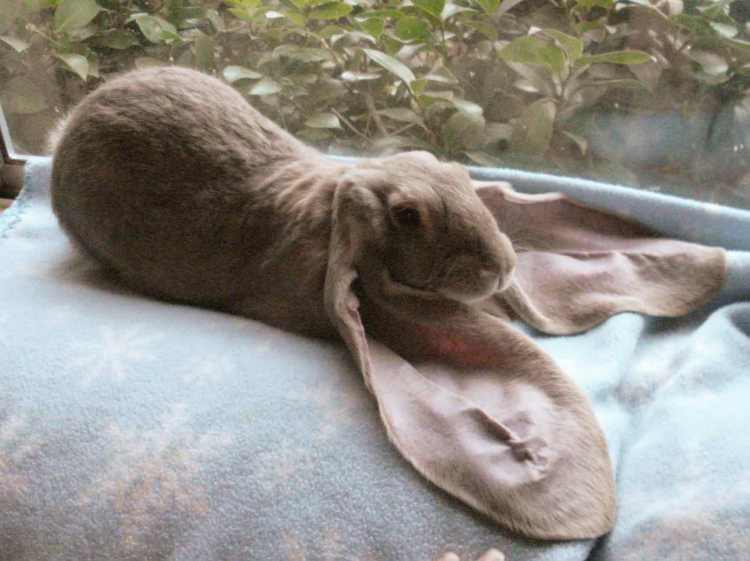
The Lop breeds are easy to identify by their ears that flop downwards. The English Lop is considered the first lop-eared breed, and boy are their ears long. Unfortunately, they are prone to ear infections because of this, and may injure themselves by standing on their own ears. Temperament-wise, they are described as “placid.” These kind rabbits don’t move around much and may be reluctant to exercise.
1. Harlequin
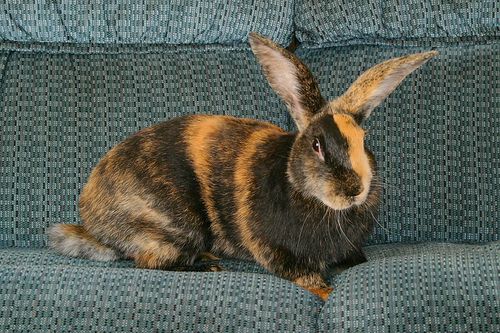
Alright, I’ll admit that I’m biased, and that I put this breed at #1 because I have a Harlequin mix named Hippie, who is my best friend. Harlequin rabbits are hard to miss: they are a showy breed from France known for the distinct color splashes in their fur. They come in two color types: Japanese and Magpie. Japanese Harlequins have splashes of orange with patches of black, blue, chocolate, or lilac. Magpies are the same, but with white in place of orange. The breed’s appearance matches its personality: they are goofy, clownish, and playful. They are great at making their owners laugh, or cheering their owners up after a bad day.
Remember: like any pet, rabbits have certain care requirements, and research should always be done before adopting one.


I once raised rabbits. I sure miss them, especially my lob eared!
Lop-eareds are adorable.